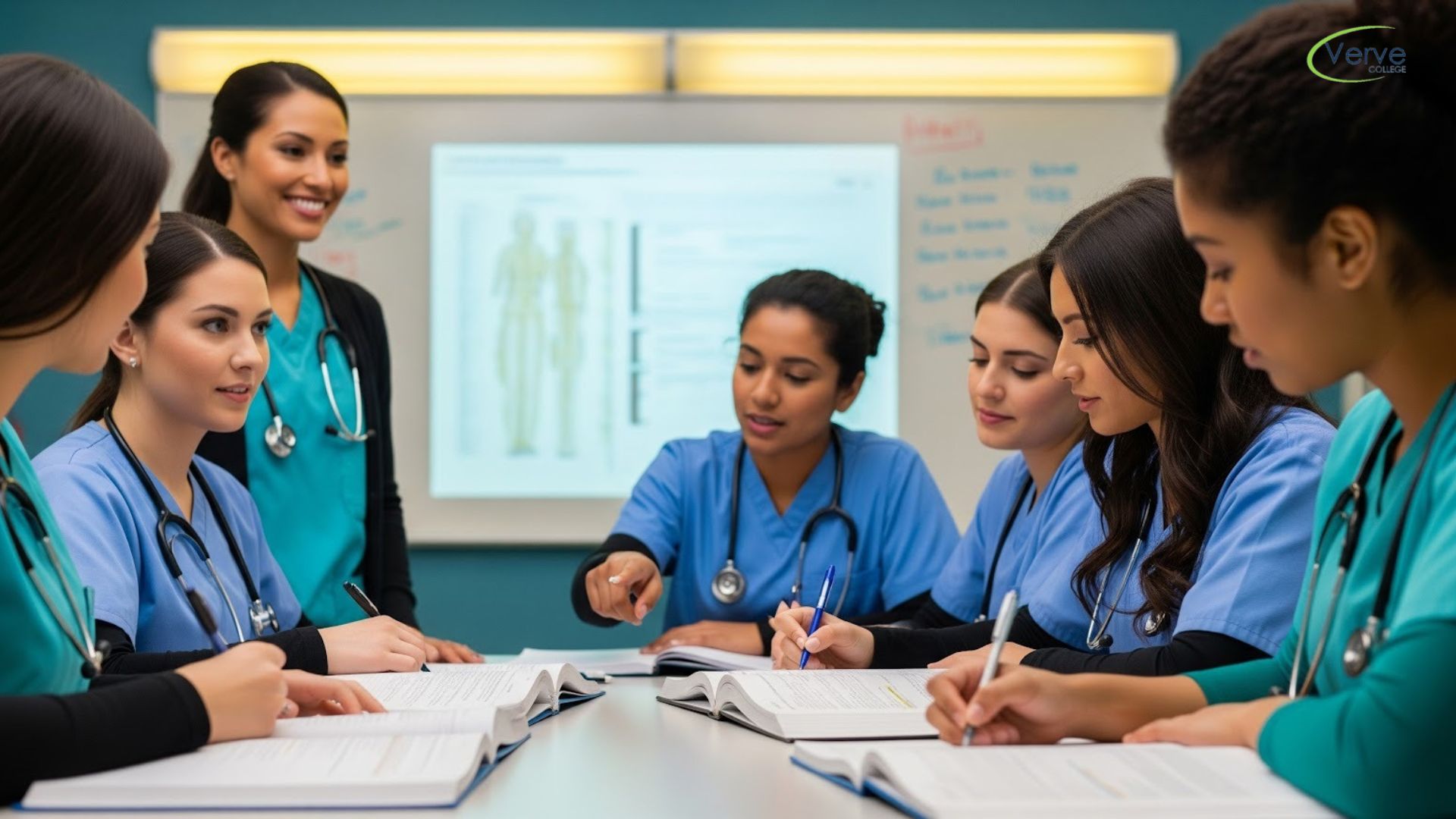- Oak Brook:(630) 705-9999
- Chicago:(312) 920-8822
- Email:inquiry@vervecollege.edu
- Make a Payment
- Home
- Programs
- Admission
- Resources
- ATI Entrance Exam Resources
- New E-Digital Library
- Refer a Friend
- School Newsletter
- Events
- Employers
- Job-Network
- Alpha Beta Kappa Candidates
- Verve College Library
- Graduation and Pinning Ceremony Photo Galleries
- Textbook Information
- Career Services
- Tutoring
- School Catalog
- FAQ
- Constitution Day Program
- Alumni
- Verve College Plans
- Financial Aid
- HEERF Reporting
- Satisfactory Academic Progress
- Apply For Financial Aid
- Net Price Calculator
- Return of Title IV Funds (R2T4)
- Financial Aid Office Code of Conduct
- Contact
- FAQs
- Verification Policy
- Vaccination Policy
- Student Right-to-Know Act
- Misrepresentation
- Information Security Program
- Academic Award Year
- Availability of Employee
- Cost of Attendance
- Health & Safety Exemption Requirement
- Students Rights and Responsibilities
- Leave of Absence
- Pell Formula
- Military Students
- Grants/ Scholarship Policy
- Contact Us
- Testimonials
- Blog
Is a Nursing Career Right For You?
Take The Free Quiz
Clinical Applications of Anatomy and Physiology: Real-World Examples
Clinical Applications of Anatomy and Physiology: Real-World Examples
Anatomy, physiology, and medical technology are the foundations of modern medicine, and they play an essential role in delivering appropriate patient care & check patient health. The interweaving of these two disciplines in the complex tapestry that is healthcare allows medical professionals to understand the basic structure and function of the human body. A&P class is the best choice to learn about the clinical applications in healthcare and for doing medical practice.
This article will examine what are clinical applications in healthcare & in anatomy and physiology and their role in diagnosis & therapies.
Human Anatomy and Physiology: A Basis for Health Care Technology
Human anatomy is the foundation for health information technology progress. A through understanding of the workings of the body is crucial for developing cutting-edge pharmaceutical products and services.
- The anatomy study provides insight into the body’s structure, organization, and function. It reveals the intricate tissue system, organs, and body systems that work harmoniously. It serves as a medical equipment model, allowing designers and engineers to make equipment accessible to one another and meet specified physiological requirements.
- The workings of these anatomic structures. For developing new medical technologies, it is important to understand how major organ systems work and how they interact and respond to stimuli like monitoring blood pressure. Every medical breakthrough, from advanced imaging to robotic surgery and prosthetics, is rooted in an understanding of human physiology.
Let’s explore the intersection between anatomy, physiology, and medical technology.
- Exploring anatomy and physiology applications in medical technology: We will explore anatomy, physiology, and clinical applications and how these contribute to better patient care and medical interventions in healthcare organization.
- Surgical planning simulation: These virtual models allow surgeons to plan complex surgical procedures and visualize the patient’s anatomy before they enter the operating room. This technology allows for more efficient and precise surgeries, which reduces the risk of complications.
- Medical imaging and diagnostics : Medical imaging techniques such as X-rays, nuclear evidence-based medicine scans, and ultrasounds are based on anatomy and physiology. Understanding anatomical structures, physiological processes, and their interactions helps to interpret and analyze the images.
- Prosthetics and orthotics The development of orthotics and prosthetics is heavily influenced by anatomy and physiology. For example, knowledge of the musculoskeletal systems helps design prosthetics that integrate seamlessly with the residual anatomy of the patient. The prosthetic limbs must mimic the movement and function that the missing body part would have.
- Medical devices design: Medical devices that interact directly with the body require understanding of anatomy and physiology. Understanding anatomy and physiology is crucial for designing medical devices interact with the human body. Nowadays, doctors are also using mobile device apps for testing a cardiac arrest simulation.
- Virtual reality & augmented reality: The development of virtual (VR) and augmented reality (AR) medical applications is based on anatomy and physiology. These technologies offer immersive experiences for healthcare professionals that let them explore and interact in a virtual environment with anatomical structures.
Conclusion
Verve College offers anatomy and physiology course near me for clinical practices. Individuals can excel in their careers with comprehensive courses, expert guidance, and extensive studies. Students can pursue rewarding career opportunities by leveraging the anatomy classes near me. They can also make a significant contribution to the ever-evolving healthcare industry by understanding about a nervous system, human cells & internal respiration.
 Sign up
Sign up Login
Login




